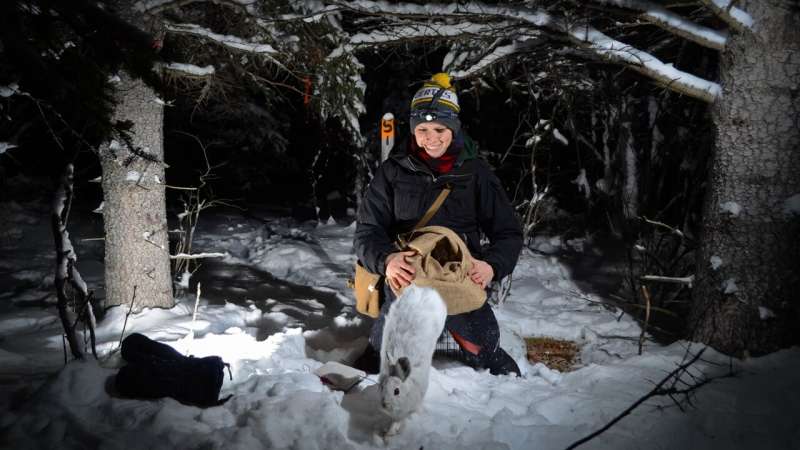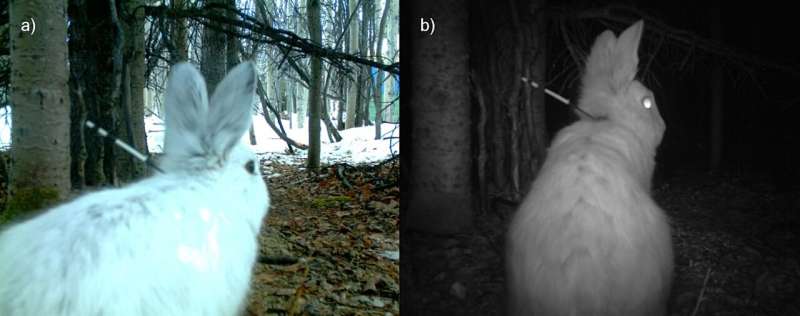New marking method gives biologists a better way to identify individual animals at night

Biologists and ecologists often need to identify individual animals in the wild to help answer questions related to population density, foraging patterns and more. But there's an issue: Many of the markers they use, such as tags with colors or numbers on them, are only clearly visible in daylight—which poses a challenge for studying nocturnal animals.
Now, researchers including post-doctoral fellow Yasmine Majchrzak have found a simple yet effective method that solves this issue: a bar code pattern using heat shrink material attached to antennae or collars used in field research.
"We're already collaring the individuals because we're monitoring survival and behavior, so we thought, what if we could put some sort of pattern on the collars and antennae and try to identify them that way?" said Majchrzak.
The cost-effective, non-invasive solution uses the same type of shrinkable tubing that covers cables or wires to prevent wear and tear. The material is naturally reflective when photographs are taken with motion-triggered cameras, which is what researchers typically set up in the field.
"The biggest limitation with methods that currently exist is that you just can't really see numbers or colors or anything like that at night," said Majchrzak. "The fact that you can get something reflective that's easy to identify is such a huge advantage."
Simply incorporating an added feature into existing collars and antennae also means the method is suitable for a wider range of sizes and species of animals, Majchrzak explained.

"We were able to use it on a small species, the snowshoe hare, which is not really an area where people have been able to get individual identification very often."
Along with snowshoe hares, Majchrzak and her collaborators were able to test the new method on Canada lynx—both ideal species to test because they're particularly active at night, she explained.
The method can also be beneficial for tracking the population density of animals that aren't able to be retrapped.
Majchrzak said the new method can be used to answer a wide variety of ecological questions, such as how often a mother visits a nest to check on her young or which animals are spending significant time together.
"I hope that any other researcher who is trying to find a way to mark an individual at night for their own research purposes finds this paper, and maybe it'll help them out."
Collaborators include Stan Boutin, professor in the Department of Biological Sciences, and Banting postdoctoral fellow Michael Peers.
More information: Yasmine N. Majchrzak et al, A method for marking individual animals in motion-triggered camera studies, Mammalian Biology (2022). DOI: 10.1007/s42991-022-00225-7
Journal information: Mammalian Biology
Provided by University of Alberta





















